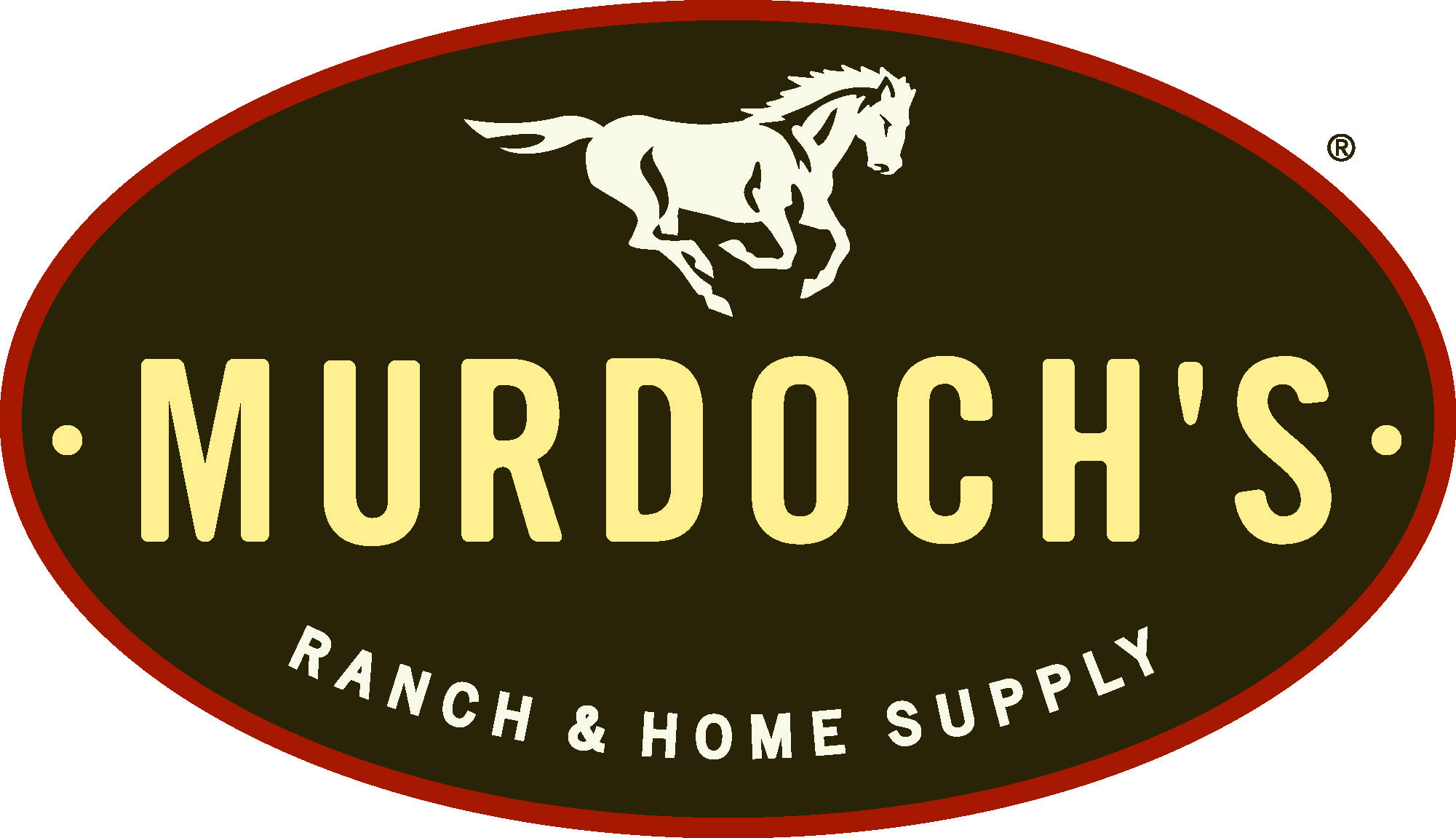Rodeo 101
January 10-25, 2026
How well do you know rodeo?
Professional rodeo action consists of two types of competitions – roughstock events and timed events. Check out the list of pro rodeo events below with a deep-dive into the what, why and how of each event.
Want to learn more from the pros? Join us for one of our three in-person Rodeo 101's sessions during the 2025 show. Hear from professional cowboys, cowgirls, stock contractors and rodeo execs about everything from rodeo technics, human and animal conditioning, diet and, equipment. Stick around for Q&A to wow your friends with your rodeo knowledge.
2025 Rodeo 101 Sessions
Roughstock Events
In the roughstock events – bareback riding, saddle bronc riding, and bull riding – a contestant’s score is equally dependent upon his performance and the animal’s performance. In order to earn a qualified score, the cowboy, while using only one hand, must stay aboard a bucking horse or bull for eight seconds. If the rider touches the animal with his free hand, he is disqualified.
In saddle bronc and bareback riding, cowboys must mark out their horses; that is, they must exit the chute with their spurs set above the horse’s shoulders and hold them there until the horse’s front feet hit the ground after its first jump. Failing to do so results in disqualification.
During the regular season, two judges each score a cowboy’s qualified ride by awarding 0 to 25 points for the animal’s performance and 0 to 25 points for the rider’s performance. The judges’ scores are combined to determine the contestant’s score. A perfect score is 100 points.
Timed Events
In the timed events – tie-down roping, steer wrestling, team roping, and women’s barrel racing – a contestant’s goal is to post the fastest time in his event.
In the cattle events, calves and steers are allowed a head start. The competitor, on horseback, starts in a three‐sided fenced area called a box. The fourth side opens into the arena. A rope barrier is stretched across that opening and tied to the calf or steer. Once the calf or steer reaches the head-start point– predetermined by the size of the arena – the barrier is automatically released. If a cowboy breaks that barrier before it is released, he is assessed a 10‐second penalty.
In women’s barrel racing, a horse and rider follow a cloverleaf pattern around three barrels and then dash across the finish line. A five-second penalty is assessed for each barrel that is tipped over during the contestant's run.
National Western Pro Rodeo Format
The National Western Stock Show is host to 20 rodeo performances in the final 11 days of the show. Each event consists of 80 contestants from the United States and Canada competing in two go-rounds to advance to a tournament-style finals weekend. Top contestants compete in one of three Semi-Final performances to earn their way into a winner-take-all Final on Championship Sunday!
Bareback Riding
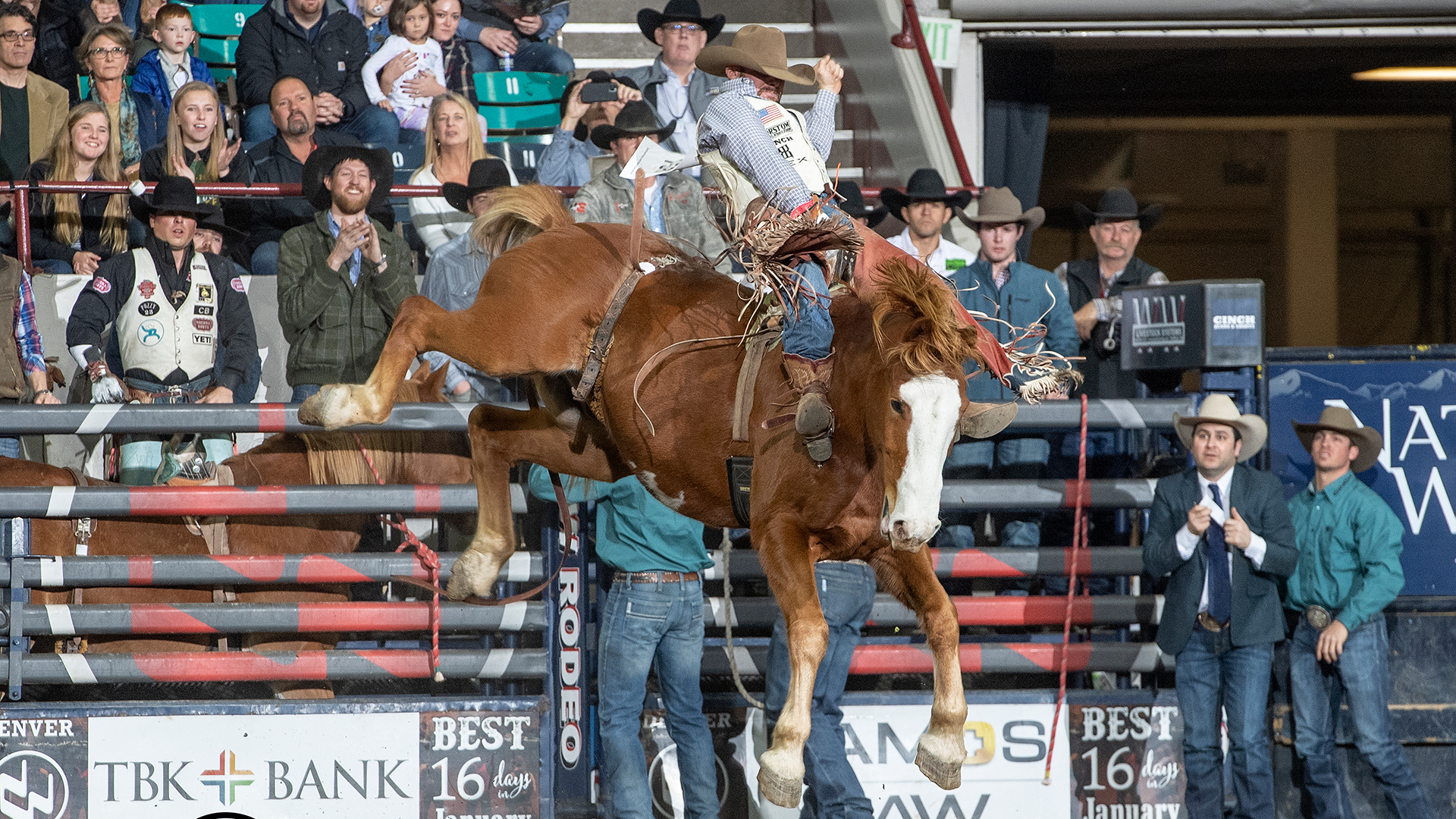
presented by:
Bareback riding offers a sensation about as enjoyable as riding a jackhammer, pogo stick-style, using only one hand. And that’s the easy part. The bareback rider’s real challenge is to look good while he’s being punished.
Bareback riding is the most physically demanding event in rodeo, its toll on the body is immense.
Muscles are stretched to the limit, joints are pulled and pounded mercilessly, ligaments are strained and frequently rearranged. The strength of the broncs is exceptional and challenging them is often costly. Bareback riders endure more punishment, suffer more injuries and carry away more long-term damage than all other rodeo cowboys. To stay aboard the horse, a bareback rider uses a rigging made of leather and constructed to meet PRCA Rodeo safety specifications. The rigging, which resembles a suitcase handle on a strap, is placed atop the horse’s withers and secured with a cinch. As the bronc and rider burst from the chute, the rider has to mark out his horse. In other words, he must have both spurs above the horse’s shoulders until the horse’s feet hit the ground after its initial move from the chute. If the cowboy fails to do this, he is disqualified. As the bronc bucks, the rider pulls his knees up, dragging his spurs up the horse’s shoulders. As the horse descends, the cowboy straightens his legs, returning his spurs over the point of the horse’s shoulders in anticipation of the next jump. But it takes more than sheer strength to make a qualifying ride and earn a money-winning score. A bareback rider is judged on his spurring technique, the degree to which his toes remain turned out while he is spurring and his exposure, or willingness to lean far back and take whatever might come during his ride.
Barrel Racing
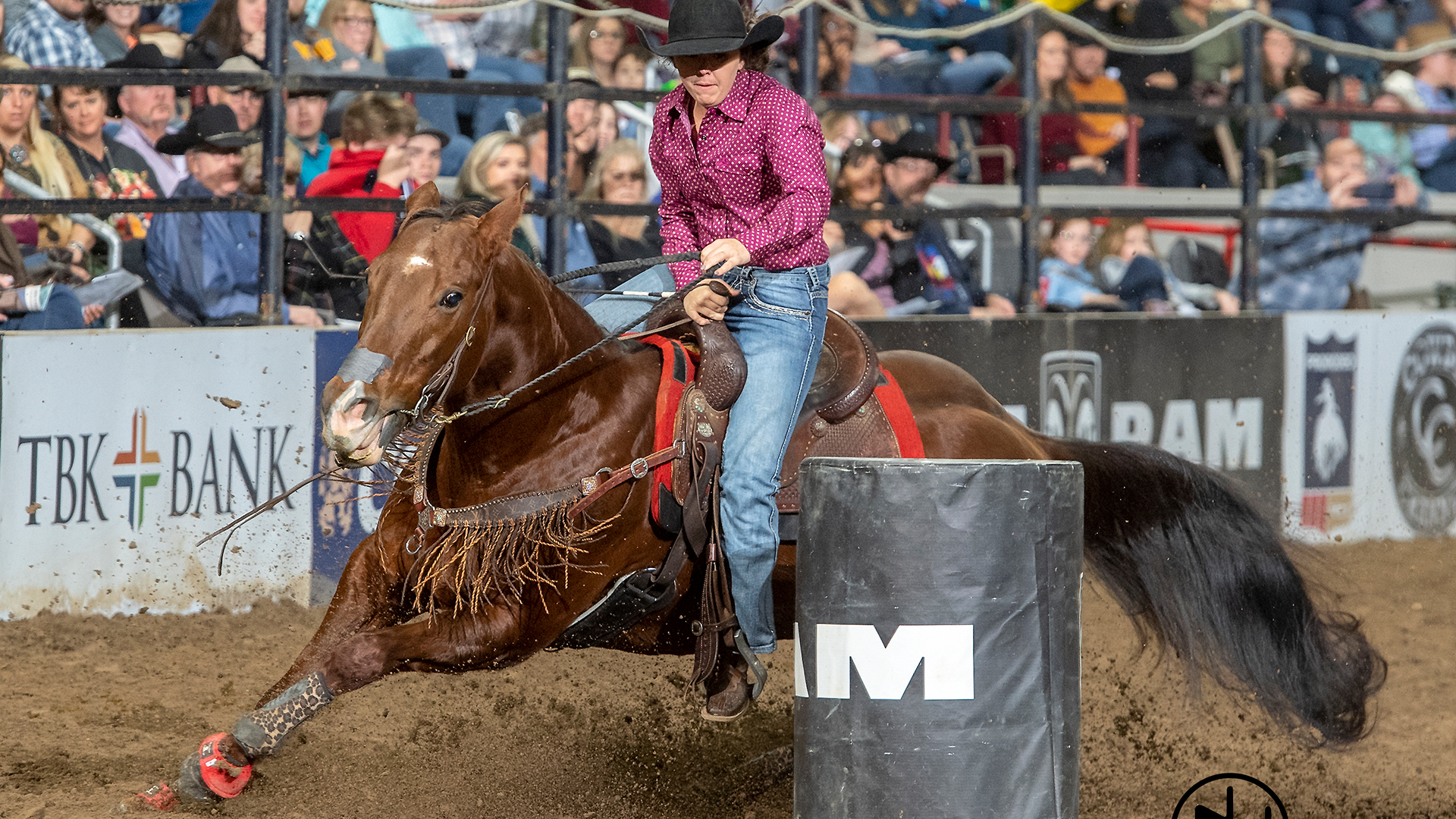
presented by:
Barrel racing is one of professional rodeo’s most colorful and exciting events. The fast-paced contest teaming horse and rider is similar to a horse race, easy to understand, and ranks just behind bull riding in crowd popularity.
Barrel racing began as a friendly challenge of horsemanship skills between cowgirls and has developed into a multi-million dollar professional sport. Matter of fact, in 1999, the world champion barrel racer took home the highest season earnings check of any professional rodeo athlete. Once considered a sideline event of traditional rodeos, barrel racing is now an integral part of most PRCA rodeos. The lure and the thrill of barrel racing lie in the excitement of seeing equine athletes and their skilled trainers perform at their best. From the grandstands, the event seems simple. Horse and rider cross the start line at a run, follow a cloverleaf pattern around three barrels, then dash across the finish line. What is not seen are the years of practice required to train that horse to run barrels. The times of top riders are so close that electronic timing devices accurate to the hundredth of a second must be used. Professional women’s barrel races are run under the direction of the Women’s Professional Rodeo Association. Formed in 1948 by a group of Texas women led by Blanch Altizer-Smith, sister of 1959 PRCA calf roping champion Jim Bob Altizer, the Girls Rodeo Association began as an effort to involve women in professional rodeo. There were 74 charter members and 60 approved events with a total payoff of $29,000 the first year. The GRA was renamed in 1982, and since, the WPRA has expanded its goals to include larger purses, bigger and better rodeos, and greater public recognition of women’s rodeo.
Bull Riding
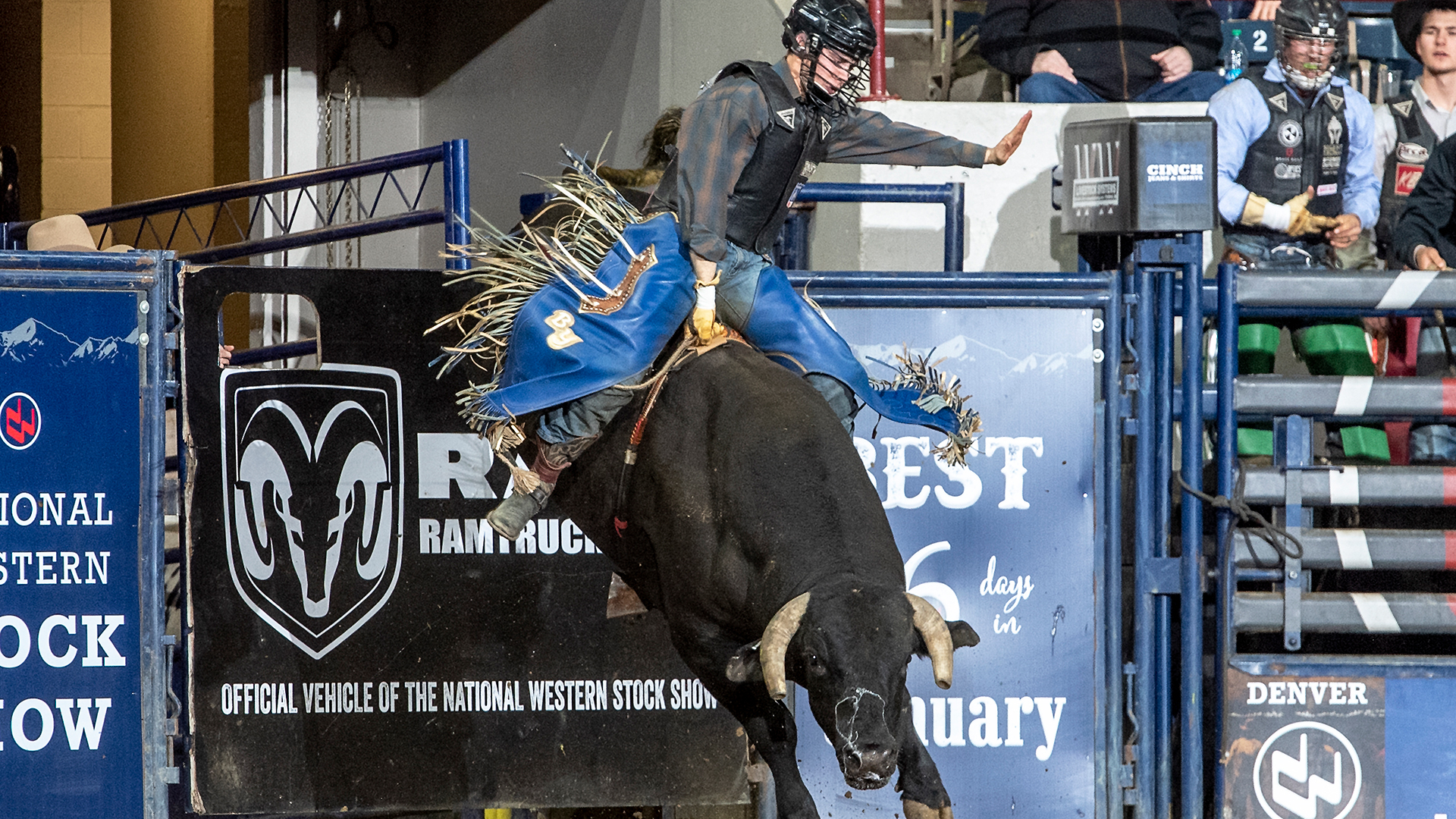
presented by:
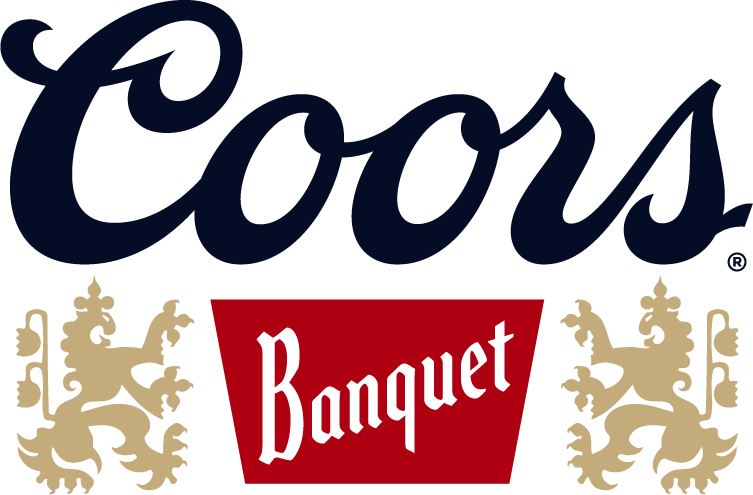 In a time when action-packed, adrenalin-filled extreme sports are the latest craze, it only seems natural that bull riding would become rodeo’s most popular event. The risks are obvious. Serious injury is always a possibility for those fearless or foolish enough to sit astride an animal that weighs a ton and is usually equipped with dangerous horns. But cowboys do it and fans love it.
In a time when action-packed, adrenalin-filled extreme sports are the latest craze, it only seems natural that bull riding would become rodeo’s most popular event. The risks are obvious. Serious injury is always a possibility for those fearless or foolish enough to sit astride an animal that weighs a ton and is usually equipped with dangerous horns. But cowboys do it and fans love it.
Bull riding is dangerous and predictably exciting, demanding intense physical prowess and supreme mental toughness. Like bareback and saddle bronc riders, the bull rider may use only one hand to stay aboard during the eight-second ride. If he touches the bull or himself with his free hand, he receives no score. But unlike the other rough stock events, bull riders are not required to mark out their animals. While spurring a bull can add to the cowboy’s score, riders are commonly judged on their ability to stay aboard the twisting, bucking ton of muscle and rage. Balance, flexibility, coordination, quick reflexes, and a good mental attitude are the stuff of which good bull riders are made. To stay aboard the bull, a rider uses a flat braided rope, which is wrapped around the barrel of the bull’s chest just behind the front legs and over its withers. One end of the bull rope, called the tail, is threaded through a loop on the other end and tightened around the bull. The rider then wraps the tail around his hand, sometimes weaving it through his fingers to further secure his grip. Then he nods his head, the chute gate swings open and he and the bull explode into the arena. Every bull is unique in its bucking style. A bull may dart to the left, then to the right, then rear back. Some spin, or continuously circle in one spot in the arena. Others add jumps or kicks to their spins, while others might jump and kick in a straight line, or move side to side while bucking.
Saddle Bronc Riding
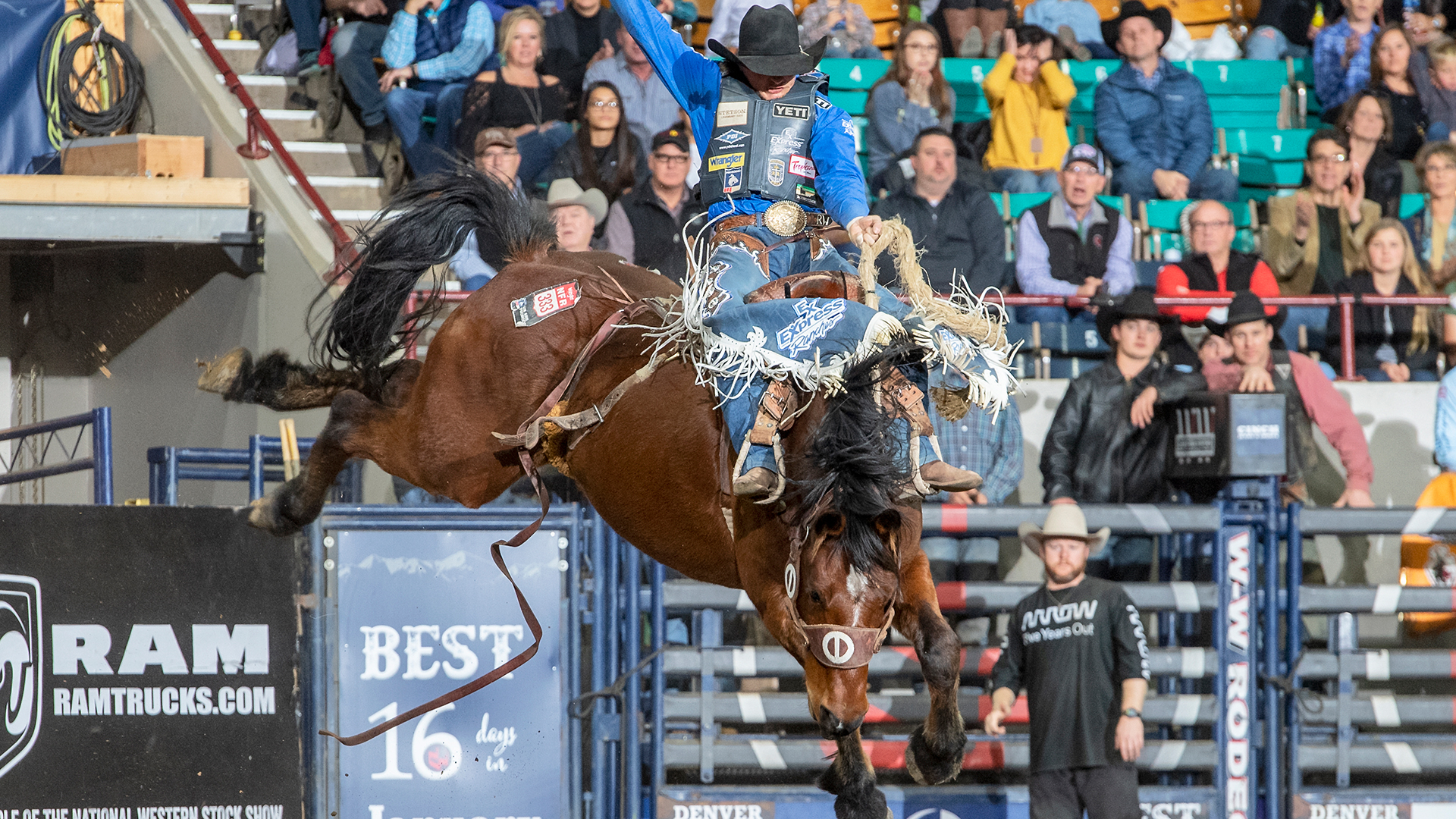
presented by:
 Saddle bronc riding is rodeo’s classic event, both a complement and contrast to the wilder spectacles of bareback and bull riding. The event requires strength, but it is as much about style as anything: grace and precise timing are mandatory.
Saddle bronc riding is rodeo’s classic event, both a complement and contrast to the wilder spectacles of bareback and bull riding. The event requires strength, but it is as much about style as anything: grace and precise timing are mandatory.
Saddle bronc riding evolved from the task of breaking and training horses to work the cattle ranches of the old West. Many cowboys claim riding saddle broncs is the toughest rodeo event to learn because of the technical skills necessary to master it. Every move the bronc rider makes must be synchronized with the movement of the horse.
The cowboy’s objective is a fluid ride, as opposed to the wilder and less-controlled ride of bareback riders. Among the similarities shared by saddle bronc riding and bareback riding is the rule that riders must mark out their horses on the first jump from the chute.
To properly mark out his horse, the saddle bronc rider must have both heels on the animal’s shoulders when it makes the first jump from the chute. If the rider misses his mark, he receives no score. While a bareback rider has a rigging to hold onto, the saddle bronc rider has only a thick rein attached to his horse’s halter. Using one hand, the cowboy tries to stay securely seated in his saddle. If he touches any part of the horse or his own body with his free hand, he is disqualified.
Judges score the horse’s bucking action, the cowboy’s control of the horse and the cowboy’s spurring action. While striving to keep his toes turned outward, the rider spurs from the points of the horse’s shoulders to the back of the saddle. To score well, the rider must maintain that action throughout the eight-second ride. While the bucking ability of the horse is quite naturally built into the scoring system, a smooth, rhythmic ride is sure to score better than a wild, uncontrolled one.
Steer Wrestling
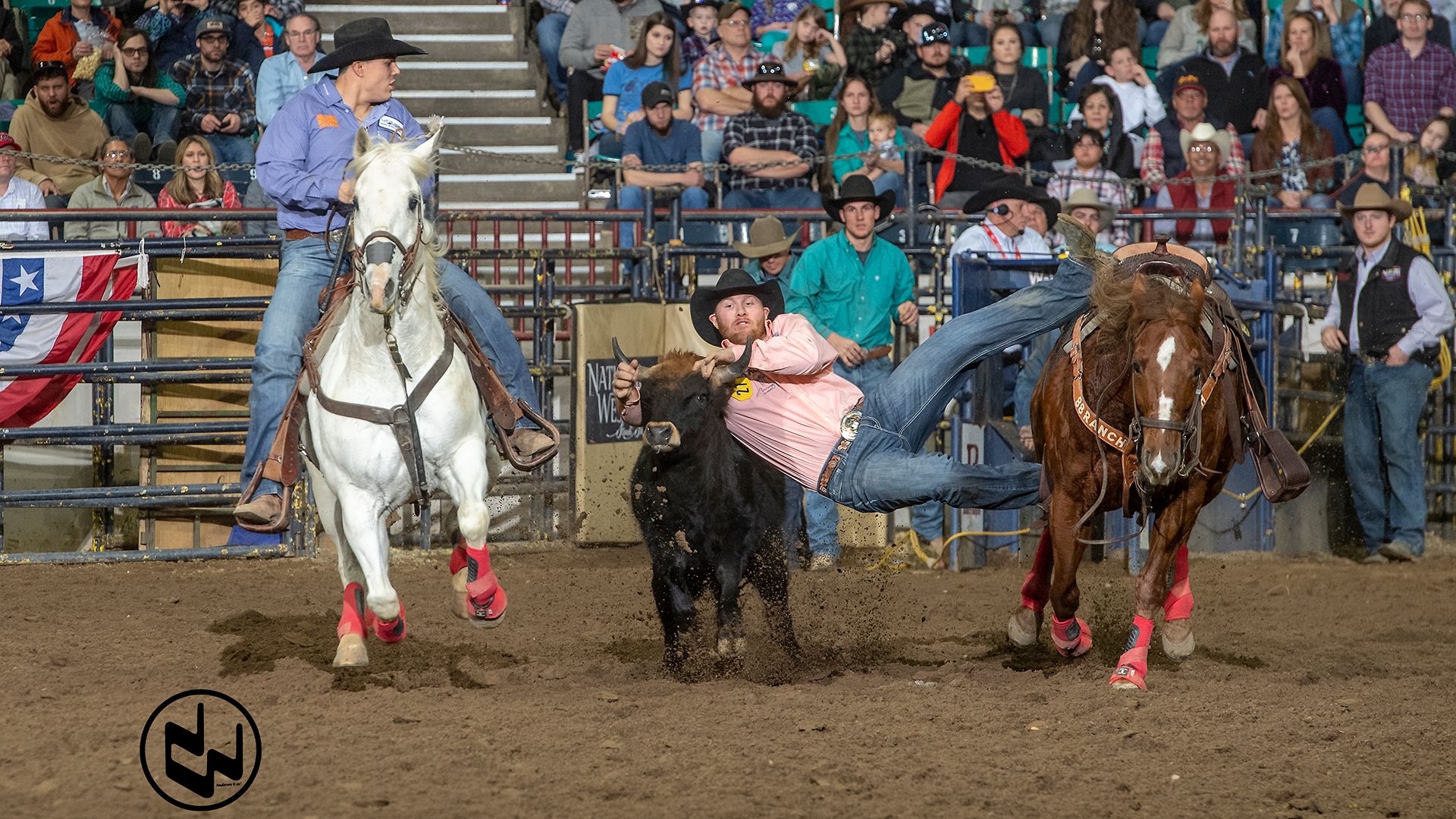
Speed is the name of the game in steer wrestling. With its modern world record sitting at 2.4 seconds, steer wrestling is the quickest event in rodeo.
The cowboy’s objective is to use strength and technique to wrestle a steer to the ground as quickly as possible. That sounds simple enough. But anything that sounds that easy has to have a catch to it, and that catch here is the steer generally weighs more than twice as much as the cowboy trying to throw it. The need for speed and precision make steer wrestling or bulldogging as it is commonly known, one of rodeo’s most challenging events.
As with calf ropers and team ropers, the steer wrestler starts on horseback in a box. A breakaway rope barrier is attached to the steer, then stretched across the open end of the box. The steer gets a head start that is determined by the size of the arena. When the steer reaches the advantage point, the barrier is released and the steer wrestler takes off in pursuit. If the steer wrestler breaks the barrier before the steer reaches its head start, a 10-second penalty is assessed.
In addition to strength, timing and balance are skills cultivated by the successful steer wrestler. When the cowboy reaches the steer, he slides down the right side of his galloping horse, hooks his right arm around the steer’s right horn, grasps the left horn with his left hand, and using strength and leverage, wrestles the animal to the ground. His work isn’t complete until all four of the animal’s feet face upward. In order to catch up to the running steer, the cowboy uses a hazer, another mounted cowboy who gallops his horse along the right side of the steer, keeping it from veering away from the steer wrestler. The hazer can make or break a steer wrestler’s run, so his role is as important as the skills the steer wrestler hones. For that reason, and the fact a hazer sometimes supplies the steer wrestler a horse, the hazer usually receives a fourth of the payoff if the steer wrestler places.
Team Roping
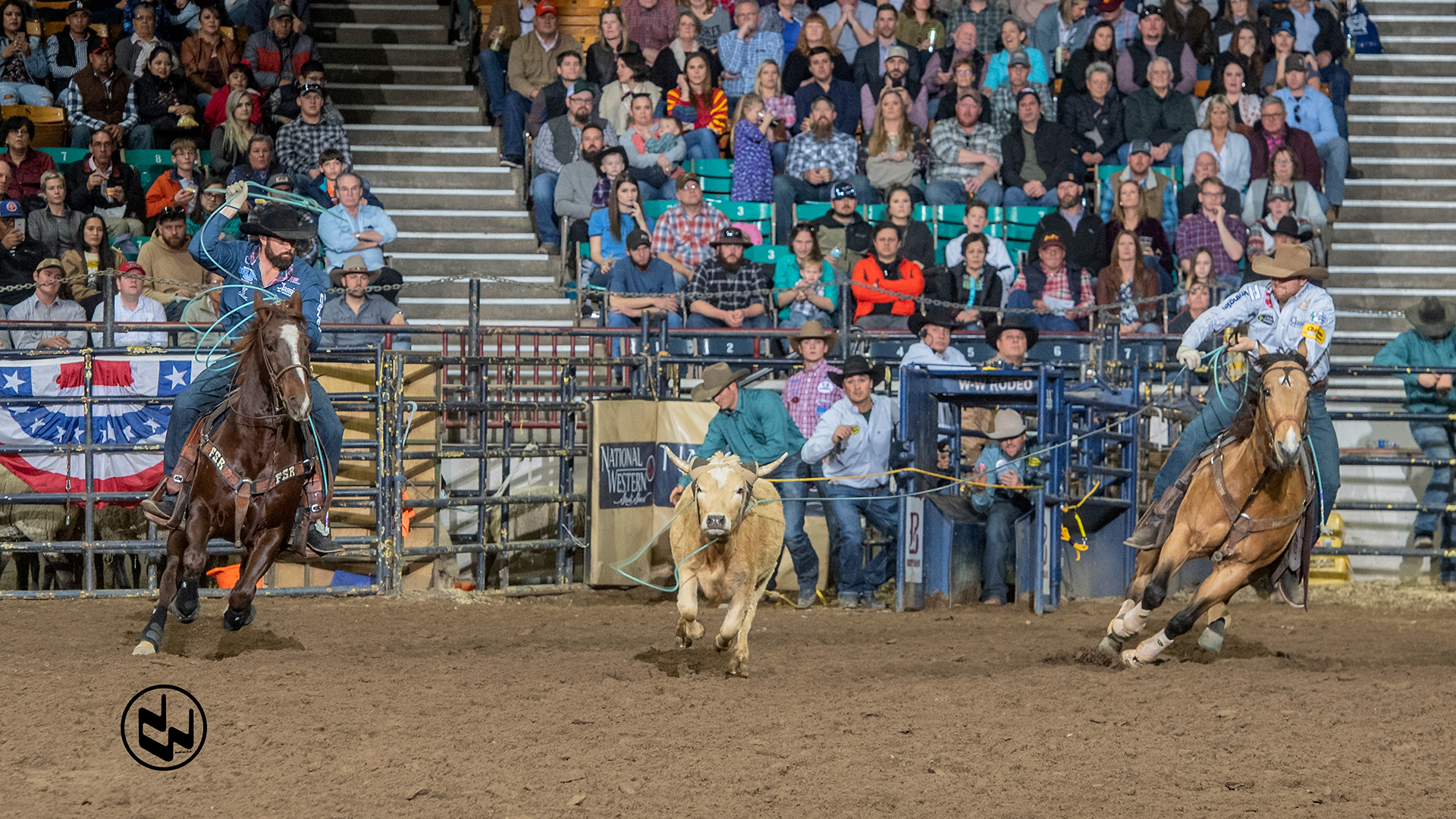
The only team event in professional rodeo, team roping requires close cooperation and timing between two highly skilled ropers – a header and a heeler.
The event originated on ranches when cowboys needed to treat or brand large steers and the task proved too difficult for one man. As in other timed events, the team ropers start from boxes on each side of the chute from which the steer enters the arena.
The steer gets a head start determined by the length of the arena. One end of a breakaway barrier is attached to the steer then stretched across the open end of the header’s box. When the steer reaches its advantage point, the barrier is released and the header takes off in pursuit, with the heeler trailing slightly further behind. If the header breaks the barrier before the steer completes its head start, the ropers are assessed a 10-second penalty. The header ropes first and must make one of three legal catches on the steer – around both horns, around one horn, and the head or around the neck. Any other catch by the header is considered illegal, and the team is disqualified. After the header makes his catch, he dallies the rope, turns the steer to the left, and exposes the steer’s hind legs to the heeler. The heeler then attempts to rope both hind legs. If he catches only one foot, the team is assessed a five-second penalty.
After the cowboys catch the steer, the clock is stopped when there is no slack in their ropes and their horses face one another. Another aspect vital to the event is the type of horse used by the ropers. The American Quarter Horse is the most popular among all rodeo competitors, particularly team ropers. Heading and heeling horses are trained separately for their specialties. Heading horses generally are taller and heavier because they need the power to turn the steer after it is roped. Heeling horses are quick and agile, enabling them to better follow the steer and react to its moves.
Tie-down Roping
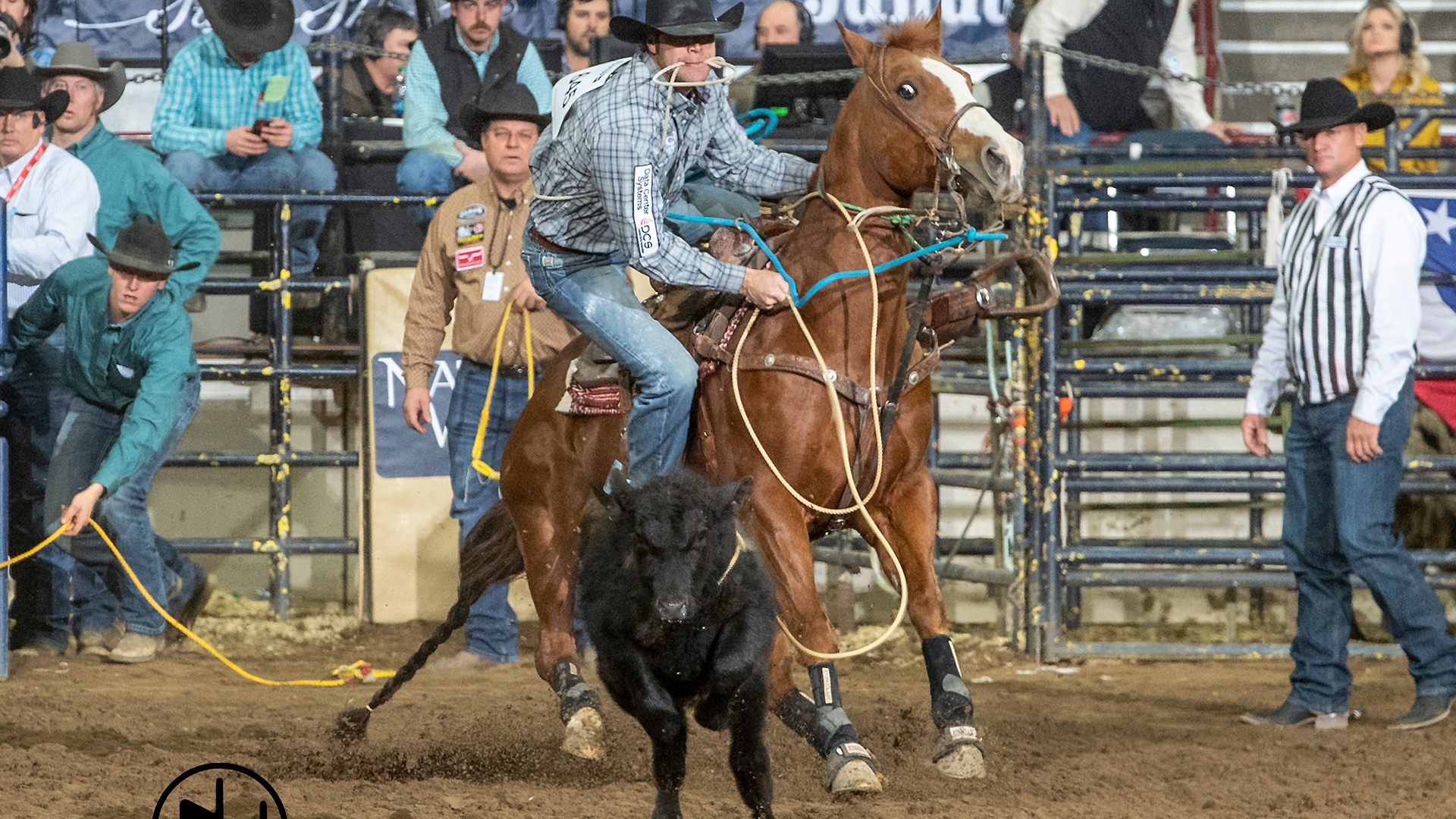
More than any other event in professional rodeo, Tie-Down Roping has roots dating back to the working ranches of the Old West. When calves were sick or injured, cowboys had to rope and immobilize them quickly for veterinary treatment.
Ranch hands prided themselves on how quickly they could rope and tie calves, and they soon turned their work into informal contests. As the sport matured, being a good horseman and a fast sprinter became as important to the competitive tie-down roper as being quick and accurate with a lasso.
In today’s modern rodeo, the mounted cowboy starts from a box, a three-sided, fenced area adjacent to the chute holding the calf. The fourth side of the box opens into the arena. The calf gets a head start determined by the length of the arena. One end of a breakaway rope barrier is looped around the calf’s neck and stretched across the open end of the box. When the calf reaches its advantage point, the barrier is released. If the roper breaks the barrier before the calf reaches its head start, the cowboy is assessed a 10-second penalty.
When the cowboy throws his loop and catches the calf, the horse is trained to come to a stop. After roping the calf, the cowboy dismounts, sprints to his catch and throws it by hand, a maneuver called flanking. If the calf is not standing when the cowboy reaches it, he must allow the calf to get back on its feet, then flank it. After the calf is flanked, the roper ties any three legs together with a pigging string – a short, looped rope he carries in his teeth during the run. While the contestant is accomplishing all of that, his horse must pull back hard enough to eliminate any slack in the rope, but not so hard as to drag the calf.
When the roper finishes tying the calf, he throws his hands in the air as a signal that the run is completed. The roper then mounts his horse, rides forward to create slack in the rope, then waits six seconds to see if the calf remains tied. If the calf kicks free, the roper receives no time.



